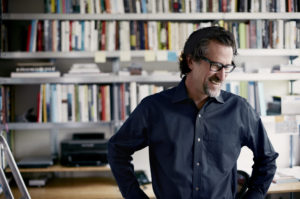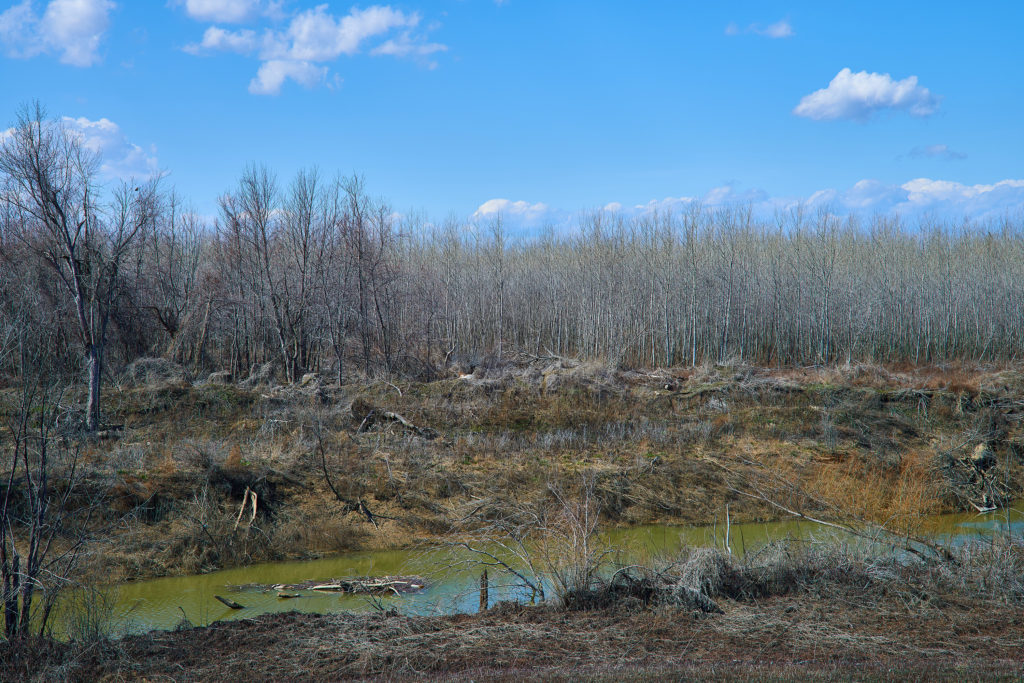
Storm clouds gather above Rocky Mountain peaks, summer rains sweeping amber fields below. Skeletal trees overlook muddy flood waters, bark shining silver in the bright winter sun.
In many ways, “Paradise Valley, MT” and “Prairie DuPont Levee, East Carondelet, IL” are a study in contrasts: warm vs. cool, sky vs. ground, epic mythmaking vs. intimate reportage. But taken together, the two images also shed light on the ways we interpret both photography and the natural world.

“The word landscape comes from topos, meaning place, and graphein, to write,” said Bruce Lindsey, the E. Desmond Lee Professor for Community Collaboration in the Sam Fox School of Design & Visual Arts at Washington University in St. Louis. Early usages referred to how the human eye perceives and frames nature, as in a painting, rather than to nature itself.
“Landscapes and photographs often fool us by appearing to be real or natural,” Lindsey said. In truth, both “are also constructed.”
As dean of the College of Architecture and Graduate School of Architecture & Urban Design from 2006-2017, Lindsey was instrumental in launching the university’s Master of Landscape Architecture program. In October, the Sam Fox School will present “Topographic Memory,” a selection of Lindsey’s own landscape photographs, in its Weitman Gallery.
The exhibition will include more than a dozen large-scale prints documenting a variety of U.S. landscapes, many of which bear subtle traces of human activity. Sites range from the high, windswept desert of Marfa, Texas, to the imposing sand dunes outside Bruneau, Idaho, to the historic Chain of Rocks Bridge spanning the Mississippi River just north of downtown St. Louis.
Also included is a suite of photographs depicting St. Louis’ Forest Park. Taken over an eight-year period, the images highlight a tension inherent to landscape photography. Though each photo embodies a small sliver of time, the landscape they capture remains dynamic and ever-changing.
“Given that a photograph can only present the past,” Lindsey said, landscape photographs inevitably showcase “a past that no longer exists.”

About the Weitman Gallery
Established in 1995, the Weitman Gallery features photography exhibitions from students as well as professional photographers from around the world. The gallery is named for the late 1950 alumnus Herb Weitman, the university’s longtime director of photographic services, who also helped found the Sam Fox School’s photography program in the late 1960s.
“Topographic Memory” opens Sunday, Oct. 1, and remains on view through Oct. 18. The Weitman Gallery is on the lower level of Steinberg Hall, immediately adjacent to the Mildred Lane Kemper Art Museum. For more information, visit samfoxschool.wustl.edu.